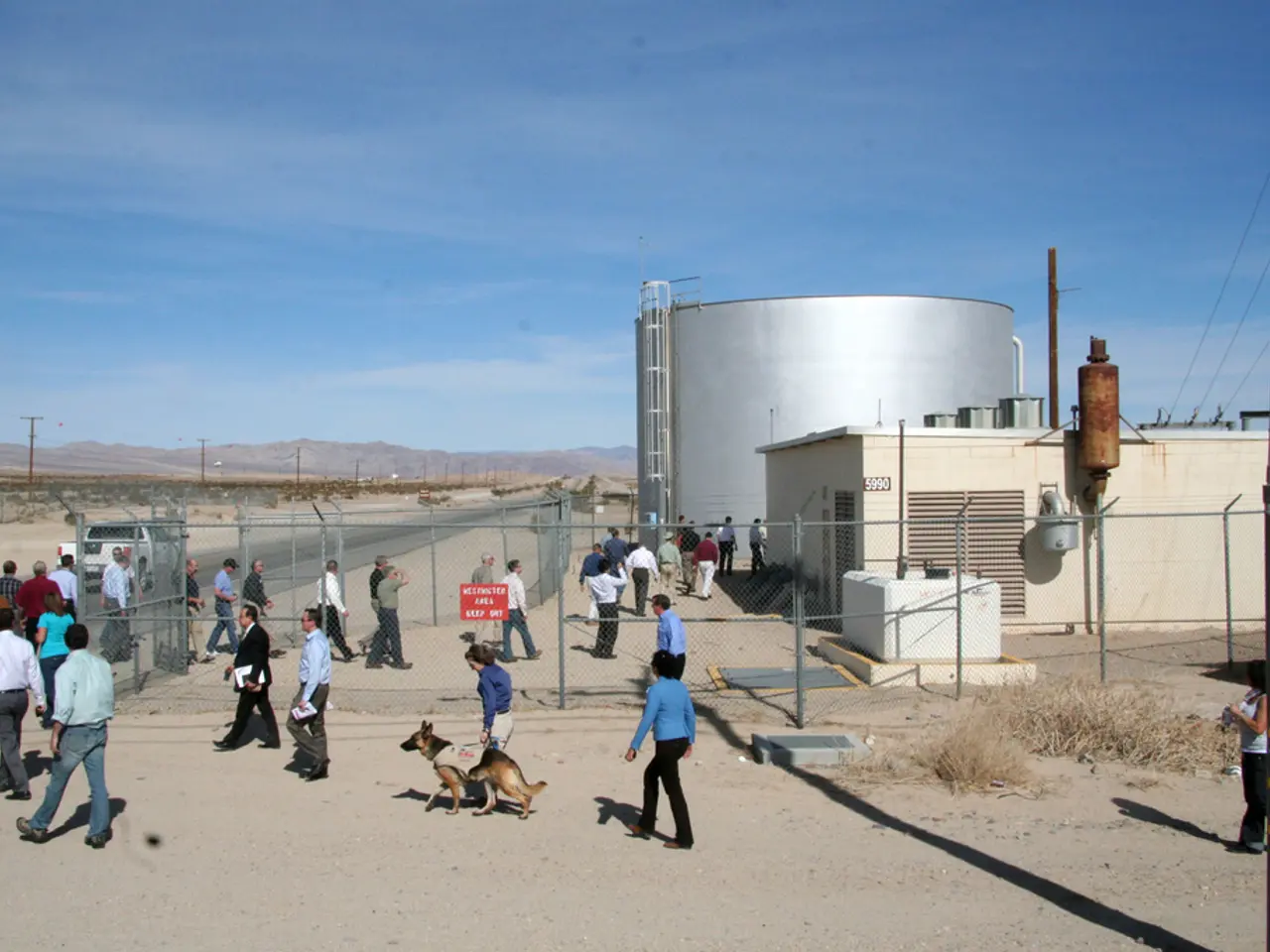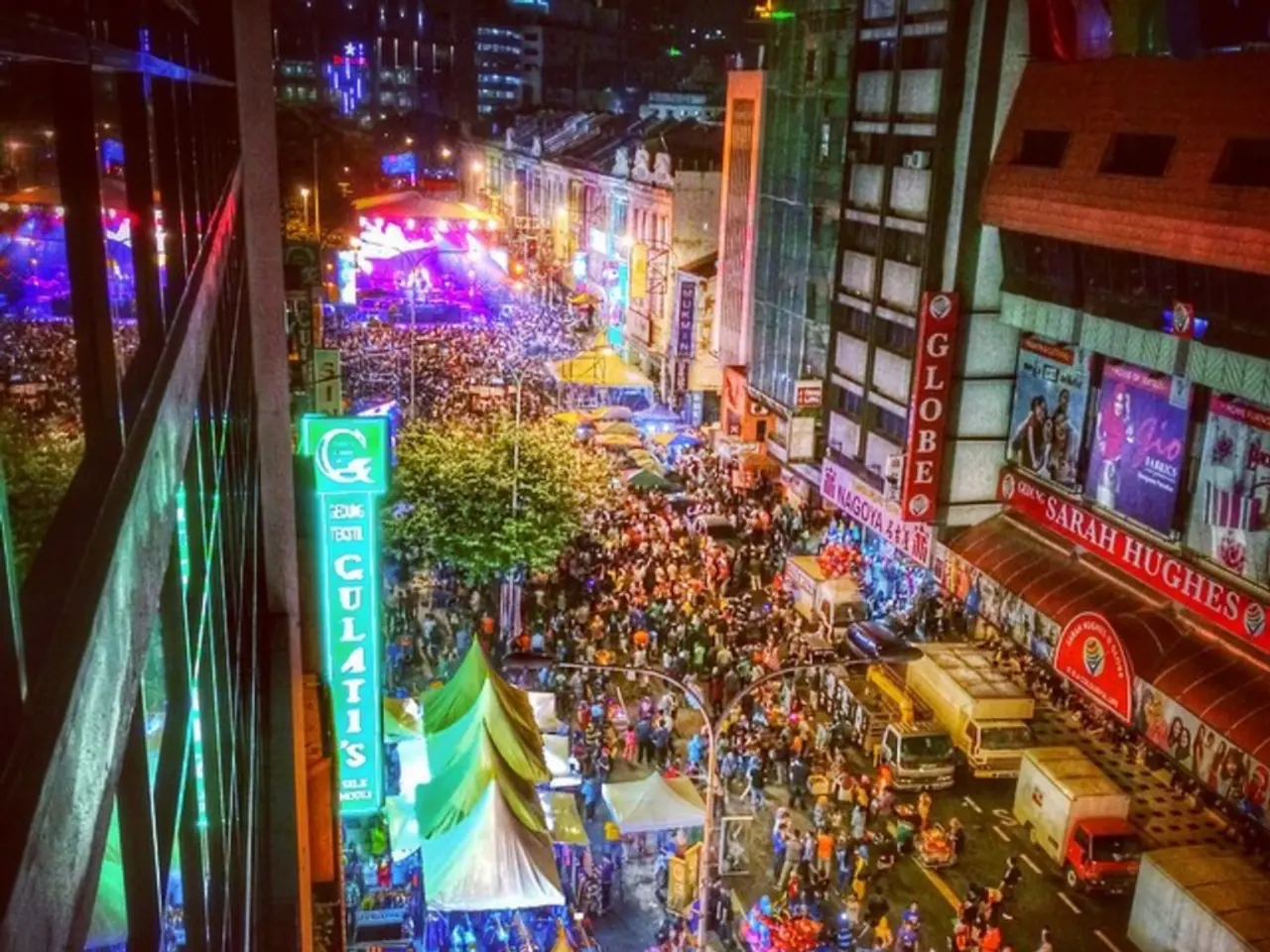2020 Failed to Ensure Safety for Environmental Land Protectors
In the year 2020, approximately 196 environmental and land defenders were killed worldwide, a grim reminder of the ongoing threat these individuals face in their tireless efforts to protect our planet. This figure, reported by various organisations, is part of a disturbing trend that has seen over 2,000 murders of defenders since 2012[1][3].
The risks these brave individuals confront are not limited to physical violence. In fact, they encounter a myriad of challenges that range from digital threats and legal pressures to health crises and societal marginalisation.
One of the most insidious threats comes in the form of online abuse and digital threats. Activists have reported incidents of trolling, doxxing (publishing private information), and cyberattacks, which can lead to harassment, arrests, and a chilling effect on activism[3]. The shift towards digital communication during the pandemic made it easier for attackers to follow and harass defenders online.
Criminalization and silencing through legal and political pressures are another significant danger. These pressures disrupt the work of defenders and endanger their safety[3]. In many cases, defenders, particularly Indigenous ones, are subjected to poverty, land grabbing, and cultural marginalisation. In 2023, Indigenous defenders accounted for 43% of murdered environmental defenders[5].
Health risks and humanitarian crises are also prevalent, particularly in contexts where illegal mining pollution leads to malnutrition and diseases. The Yanomami Indigenous Territory in Brazil is one such example[2].
The coronavirus pandemic added another layer of complexity to the already challenging work of environmental land defenders. Border closures and inability to gather in groups made protecting defenders more difficult. Working remotely with defenders became more challenging and time-consuming, requiring shorter but more frequent capacity building sessions[6].
Despite these daunting challenges, the spirit of resistance and resilience remains strong. Fikile Ntshangase, a 65-year-old grandmother in Ophondweni, South Africa, was one such defender. She was killed in October 2020 after opposing the expansion of a coal mine near her home[4]. Ntshangase took the company, Tendele Coal, to court and refused a bribe to withdraw her legal case.
Inspired by the Black Lives Matter movement in the U.S., human rights campaigns against anti-Blackness sprung up worldwide. Similarly, many Indigenous communities, including some in Central America, followed the lead of Black Lives Matter organisers and supporters[7].
However, the struggle is far from over. In 2020, at least 331 human rights defenders were killed, with 69% focusing on land, Indigenous, and environmental issues[8]. The Garifuna leaders and organisers, the Afro-descendant Indigenous people of Central America, faced risks and went missing or died in 2020[7].
As we move forward, it is crucial to remember the sacrifices made by these brave individuals and continue to support their vital work in protecting our planet and its diverse communities.
References:
[1] Global Witness. (2021). Deadly Environment: Human rights defenders on the frontlines of the climate crisis. Retrieved from https://www.globalwitness.org/en/reports/deadly-environment-human-rights-defenders-frontlines-climate-crisis/
[2] Amnesty International. (2020). Brazil: Indigenous peoples' land rights and the Amazon under threat. Retrieved from https://www.amnesty.org/en/latest/news/2020/08/brazil-indigenous-peoples-land-rights-and-the-amazon-under-threat/
[3] Front Line Defenders. (2021). Digital safety and security. Retrieved from https://www.frontlinedefenders.org/en/topic/digital-safety-and-security
[4] Amnesty International. (2020). South Africa: Killing of anti-coal activist Fikile Ntshangase must be investigated. Retrieved from https://www.amnesty.org/en/latest/news/2020/10/south-africa-killing-of-anti-coal-activist-fikile-ntshangase-must-be-investigated/
[5] Global Witness. (2023). Deadly Environment 2023: Land and environmental defenders under attack. Retrieved from https://www.globalwitness.org/en/reports/deadly-environment-2023-land-and-environmental-defenders-under-attack/
[6] Human Rights Watch. (2020). COVID-19: Protecting Human Rights Defenders in the Digital Age. Retrieved from https://www.hrw.org/report/2020/08/17/covid-19-protecting-human-rights-defenders-digital-age
[7] Front Line Defenders. (2020). Central America: Garifuna Leaders and Organisers at Risk. Retrieved from https://www.frontlinedefenders.org/en/case/central-america-garifuna-leaders-and-organisers-risk
[8] Global Witness. (2021). Deadly Environment: Human rights defenders on the frontlines of the climate crisis. Retrieved from https://www.globalwitness.org/en/reports/deadly-environment-human-rights-defenders-frontlines-climate-crisis/
- Climate activists face numerous challenges, including digital threats, legal pressures, health crises, and societal marginalization.
- In 2020, approximately 196 environmental and land defenders were killed worldwide, a figure reported by various organizations, which is part of a disturbing trend that has seen over 2,000 murders of defenders since 2012.
- A shift towards digital communication during the pandemic made it easier for attackers to follow and harass environmental land defenders online, leading to harassment, arrests, and a chilling effect on activism.
- Criminalization and silencing through legal and political pressures are another significant danger that disrupts the work of defenders and endangers their safety.
- In many cases, defenders, particularly Indigenous ones, are subjected to poverty, land grabbing, and cultural marginalization, with Indigenous defenders accounting for 43% of murdered environmental defenders in 2023.
- The risks these brave individuals confront are not limited to physical violence, with health crises and humanitarian crises also prevalent in contexts where illegal mining pollution leads to malnutrition and diseases.
- Despite the daunting challenges, the spirit of resistance and resilience remains strong among these defenders, with many communities drawing inspiration from social media and general news movements, such as Black Lives Matter, to continue the fight against war and conflicts, Climate-change, environmental-science, political issues, and social injustices in the entertainment world.








